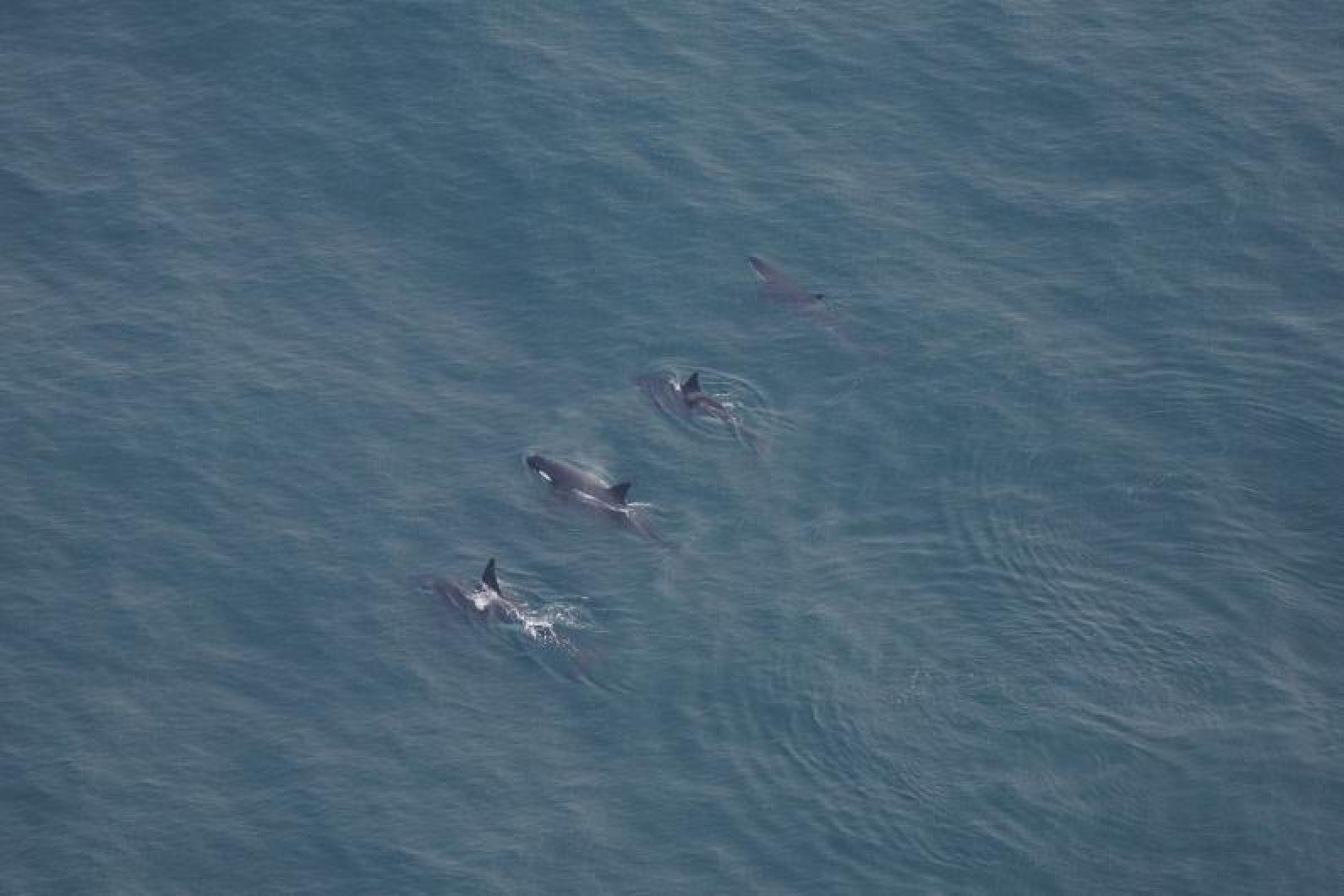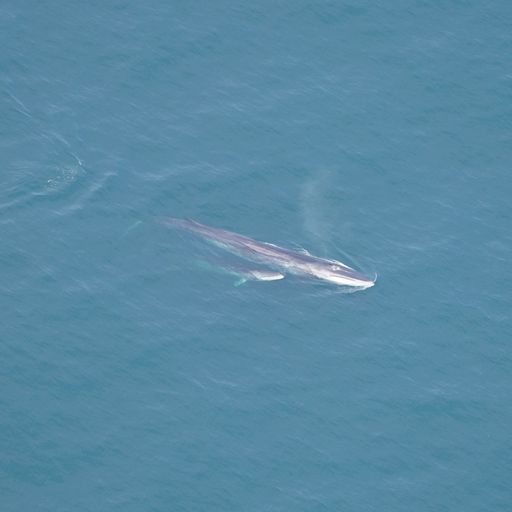Just before noon on Sunday, Nalin Storm was walking along South Beach. A Northeastern University student visiting the Island, he was nearing Katama Road when he caught a sight he won’t soon forget.
Mr. Storm and a few other beachgoers were treated to whales emerging from the waters, slapping the surface with their fins and tails.
“It was pretty awesome to see,” he said. “It was my first time seeing whales.”
Believed to be humpbacks, the playful whales were one of several whale and other marine animal sightings off Vineyard shores this week, a sign that summer is approaching.
In a routine aerial survey the same day, scientists from the New England Aquarium spotted an unusual pod of orcas about 40 miles south of the Vineyard, in addition to dolphins, humpbacks and a fin whale mom and calf.
And two dead whales, both humpbacks, also washed up on the Island this week.
Scientists say the species’ arrivals aren’t out of the ordinary for this time of year.
“They’re starting to arrive in larger numbers,” said Sharon Hsu, a research scientist at the New England Aquarium’s Anderson Cabot Center for Ocean Life. “I mean, just like people, they’re here for the nice weather and the food.”
Whales are more often found in the open water to the south of the Vineyard because the water is deeper there, said Andrew Jacobs, the lab manager at the Wampanoag Environmental Laboratory owned by the Wampanoag Tribe of Gay Head (Aquinnah).
“They’re quite, quite regular within our waters,” he said.
It is more unusual to see them in the Nantucket or Vineyard sounds, where the water is more shallow.
“These animals are capable of swimming right up against the shore so long as they’ve got enough depth of water under them,” said Charles “Stormy” Mayo, who directs the right whale ecology program at Provincetown’s Center for Coastal Studies.
The appearance of two dead humpback whales on Edgartown beaches — one on Chappaquiddick’s East Beach and the other on South Beach near Crackatuxet Cove — coincided with the start of construction of the U.S.’s first commercial wind farm, prompting speculation about how the whales died.
Humpbacks, which can grow up to 60 feet long and live for 90 years, can be found throughout the world and are often found along the east coast of the U.S.
But Ainsley Smith, the regional marine mammal stranding coordinator for NOAA, said Tuesday no cause for the whales’ death had been established. Decomposition suggested both had been dead for a few days, she said.
“These animals likely were deceased well out to sea, and then tides and winds brought them to the Island,” Mr. Jacobs of the Wampanoag lab said. He explained that without confirmed causes of death, it would be premature to blame the animals’ deaths on anything specific.
Ship strikes are a leading cause of death for whales, especially the critically endangered right whale, according to the National Oceanic and Atmospheric Administration fisheries office.

On Saturday, a pod of right whales was seen by a vessel southwest of the Vineyard, considered a year-round habitat for the mammals, prompting NOAA to implement a right whale slow zone for the area. Mariners were urged to avoid the area or maintain speeds of less than 10 knots.
“Right whales, we expect to see typically in the winter,” said Ms. Hsu. “But they are also known to be around all year, just not typically in the same numbers.”
The pod of orcas — technically dolphins, despite the species’ more menacing killer whale name — was spotted farther offshore during an aerial survey by two New England Aquarium scientists.
The apex predators have a wide-ranging diet and can be found in all of the earth’s oceans, though they are most abundant in colder waters.
The aquarium flies aerial surveys south of the Island several times each month to document populations of whales and other marine life.
“We were having already a really good day, in terms of seeing a lot of interesting things,” Orla O’Brien, the scientist who leads the aerial survey team, said. “We were seeing bubble feeding humpbacks, and we saw a lot of fin whales including a mother and calf pair.”
During the survey, the team observed more than 100 marine mammals, including 23 fin whales counting a mother and calf, five minke whales, 62 bottlenose dolphins and 20 humpback whales bubble feeding, the aquarium said.
NOAA has a stranded animal hotline for beachgoers or property owners who find a stranded marine mammal of any kind. After NOAA’s stranding team assesses the animal, it is up to whoever owns the property to decide whether the animal is buried, moved or left to nature.
With the increase in whales in the area, Ms. Hsu said the most important thing is for boaters to watch out for whales.
“A lot of them are going to be feeding, which means they’re not necessarily aware or looking out for boats,” she said. “It would just be a good precaution for boaters to be more careful when they’re out in the water, and especially if they know there’s whales around.”








Comments
Comment policy »